African mythology explains the belief and origins of life on the African continent. Being home to many ethnic groups and languages, it is difficult to unite the population using a single explanation. While some groups may share common mythological elements, a lot more have different myths to explain occurrences. Animals and humans are a huge part of the myths and legendary stories in Africa. Some of the stories serve to teach lessons on survival and wisdom while explaining why things happen.
Different cultures and groups in Africa have a lot of symbolic explanations for life. Myths and legends are ways of explaining the unexplainable.
Moving from the north to south, east to west of the African continent, one will encounter a lot of interesting explanations to life.
15 Interesting Myths And Legends In African Mythology
1. The Serer Creation Myth
Like in every creation myth in Africa, the Serer of Senegal, Mauritania and the Gambia have theirs. The account is linked to the first trees created by roog. According to the Serer myth, the creation of the earth began from a swamp.
Roog existed by itself before the world came into existence.
See Also: 12 Famous African Gods and Goddesses With Unbelievable Capabilities
2. The Eye Of Ra, The Sun God
Ra is the sun god and king of the gods who live on earth. Every day he moves across the sky and is more powerful at noon. He gets weak towards evening.
His journey explains how life on earth is sustained. Ra destroys other gods that defy him with the help of gods like Thoth and Horus the Elder.
His eye acts independently of him and he sends the eye. Once, the eye goddess has a misunderstanding with Ra and ]runs away from him but he sends for her. Her absence reduced his power.
3. Nyami Nyamin, The River God
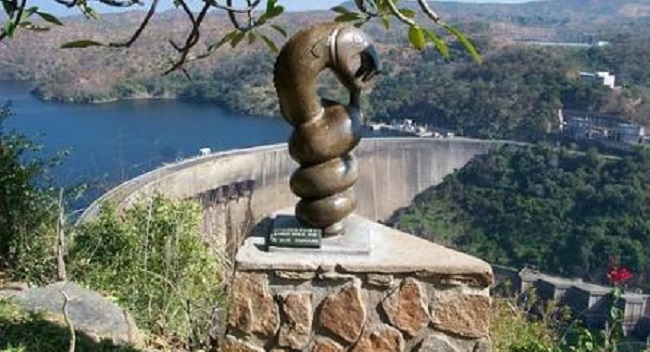
Nyami Nyamin is one of the fiercest gods. The river god resides in the river Zambezi and is an important god among the Tonga people. His legendary powers make this god fearsome.
Said to be dragonlike with a snake body and a fish head, it has vast powers. While it does not allow itself to be seen, it is alleged that the water turns red each time he passes.
In recent times, Nyami Nyamin resisted the construction of the Kariba dam along the Zambezi.
When construction began, the god sent a flood that stalled the work. Lives were lost as well as valuables while whole villages were swept away in a flood that lasted days. It took five years before the dam was completed.
Today, tremors are felt around the area. Locals claim it is Nyami Nyami trying to get to his wife who was separated from him by the dam walls.
The people still hope for Nyaminyamin to help them reclaim their land with a mighty flood that will sweep off the dam.
4. Myth Of Osiris And The First Egyptian Mummy
Osiris is one of the powerful Egyptian gods who once ruled Egypt in a long line of succession. Alongside his wife Isis. His reign was cut short when his brother, Set killed him.
In love, Isis resurrected his body and conceived their son Horus posthumously.
Osiris is the first Egyptian mummy. He was resurrected with the help of the other gods and goddesses. Anubis, the god of embalming, and Thoth, god of magic and healing joined the effort.
While Set tries to destroy Osiris’s body, Isis and her friends do everything within their power to prevent his body from decay.
After the restoration of Osiris’s body, she conceives Horujs the heir and rival of Set. Egyptians believed that like Osiris, they could have an afterlife. This gives rise to the deification of Osiris as an afterlife god.
See Also: Cheikh Anta Diop- The Life and Death of the Senegalese Politician
5. The Oduduwa Legend
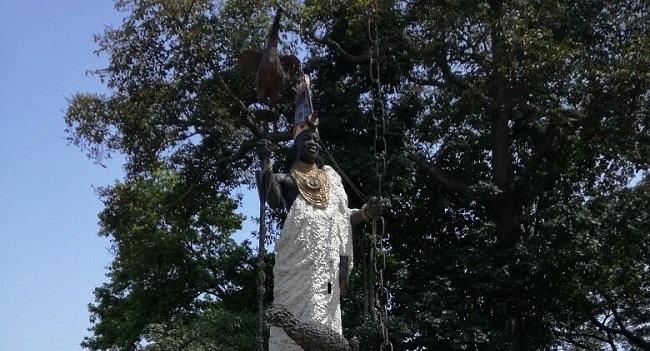
Oduduwa is one of Olodumare’s favorite orisa. He had an active role in the creation story told by the Yoruba people. He seized the task of creation from his sibling Obatala along the way.
Oduduwa took the bottom of the calabash of creation while Obatala took the top. They also had a rooster. The calabash had the sand to be spread by the rooster to create land.
The Legendary Oduduwa tale told among Yoruba is the hero who helped in quelling revolts among Yoruba factions. He is said to be the first Ooni Of Ife and father of the Yoruba race.
He defeated 13 hostile communities led by Ife led by Obatala in a war lasting many years. After the defeat, he unified Ife.
His deification was post-humous, Oduduwa forms part of the Yoruba pantheon.
See Also: Izaak Theo Adu- Bio, Age, Partner, Other Facts About Sade Adu’s Trans son
6. Kalunga Line
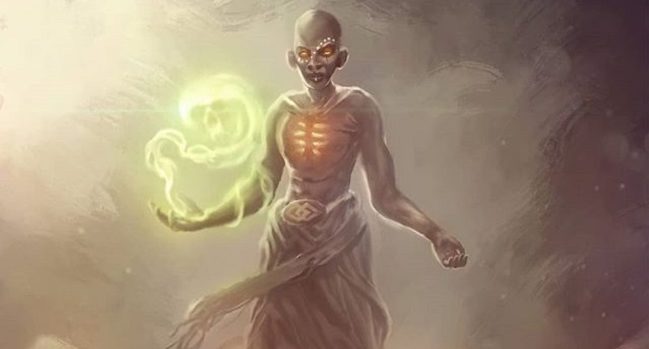
This myth makes a sharp divide between the world of the dead and the living marked by bodies of water. The kalunga line is located under the Atlantic ocean and the dead reenter through this line to the world of the living.
Kalunga referrers to the land of death as well as the god that protects the border between the two worlds.
7. The Mythical Am-Pidong Crater Lake
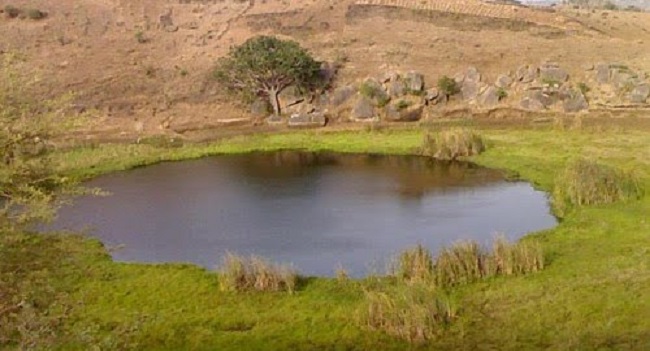
Located in Ampang west of Mangu local government of Plateau state in Nigeria. This natural crater lake was formed as a result of a volcanic eruption. It is confirmed that this lake has never dried up.
The mythical powers of the Am-Pidong crater lake have been handed from generation to generation. There is an olive tree located close to the lake but no one can pluck it fruits without seeking permission.
To get access one must throw in the first seven fruits plucked before climbing down the tree. Other mythical stories claim water from the lake even when fetched cannot be turned into another container.
Interestingly, the water from this crater lake does not flow out to any channel.
8. The Abiku Myth
This myth is a spirit that causes children to die before their time. A child will die before the age of twelve and return multiple times.
The mother’s grieve does not concern the spirit. They live in trees like the Iroko, baobab, and silk cotton. Looking at these trees, they are huge. This myth is very common among Yoruba people.
9. Ogbanje Myth
Among the Igbo’s Ogbanje is another myth that is well-rooted in family history and the birth of children. The Ogbanje is a spirit that takes children back. These children are reborn only to die again.
Stubborn children were also referred to as Ogbanje. Other sources have linked the Ogbanje myth to diseases like SID and sickle cell which were not known before.
10. Mami Water
This marine deity is linked to bodies of water and is common among riverine peoples. The phenomenon is common in different parts of Africa including the diaspora.
Mostly seen as feminine, she mostly has a human upper body and a serpent or fish hind. Though she sometimes traps swimmers, those that survive become wealthy and attractive.
Other Mami Wata’s trap sailors and never allow them to return to land.
11. Anansi The Trickster
Often taking the shape of a spider, Anansi is a trickster that is well known in West Africa and other parts of the world.
His myth originates from Ghana. Anansi is an Akan word for Spider. Anansi supposedly represents wisdom and skill. However, in most accounts, he always takes the form of a protagonist. His appearance is a spider with spindly legs and a human face but it had variations.
He is said to be the owner of all the stories in the world.
12. Shango, The God Of Thunder
One of the great Yoruba gods, he was the third ruler of Oyo. He was deified after his death. Shango reigned for seven years and use his thunder in battles. He had an ax and lightning bolts. He is worshipped on Wednesdays and followers wear red his favorite color.
Shango’s three wives were Oba, Oshun, and Oya. Oshun is a river goddess while Oya, his favorite wife had the power to change into any animal or call the rain.
The other two wives were jealous of Oya as the favorite wife who had access to Shango and his thunderbolt.
His wife’s got destroyed through deceit. Oshun convinced Oba to cook her ears so their husband would love her more. After doing that, Shango was angry that he chased her out of his house. She fell down and became a river.
Discovering what Oshun had done, she was chased out and he rained thunder on her causing her to fall and become river Osun, worshipped as the goddess of fertility to date.
At their tributary, rivers Oba and Osun form a turbulent rapid due to their rivalry.
13. Osun Deity
Often associated with fertility, nurturer, and protector of humanity, Osun is a Yoruba deity. While some accounts claim she was one of Sango’s many wives. There are other accounts. Most myths accept that she was the only female deity among the 17 that Olodumare sent to populate the earth.
Upon failure of the male deities to do so, they pleaded with her. She accepted and used her waters to revitalize the earth. She had her first encounter with humans at Oshogbo.
Yearly, worshippers celebrate the deity at the Osun river. The Osun-Oshogbo Sacred Grove was designated a UNESCO Heritage site in @005. It contains many shrines dedicated to her worship.
Outside of Nigeria, she is known as Oxum in Brazil and Ochun in Cuba.
14.Bayajidda Legend/Kusugu Well
The legend of Bayajida traces the formation of Hausa states. Bayajida is believed to be the founder of the Hausa states as we know them today. One version has it that he was a prince who fled Baghdad and came to Borno. At Borno, he married Mai’s daughter Magaram and fathered a son, Biram.
He moved away from Borno and came to a town where he asked for water. An old woman informed him that the town’s only well, Kusugu had a serpent ‘Sarki’ who allowed them to fetch water once a week. He killed Sarki and cut off the neck.
In exchange, queen Daurama married him and had a son with him, Bawo. Bawo had six sons’ called the Hausa 7 including Biram. These are Daura, Katsina, Zazzau, Gobir, Kano, and Rano.
A mistress had other sons, called Banza bakwai. These are Kebbi, Zamfara, Gwari, Jukun, Illorin, Nupe, and Yauri.
The Kusugu well is located in present-day Daura, Katsina state of Nigeria. It has become a tourist attraction.
15. Mamlambo
The South African river goddess possesses the body of a snake. Similar to Mami Wata, this river goddess is fearsome but can bestow her graces on those who find favor with her.
Sightings of a giant reptile with a horse’s body were reported after nine villagers were killed in the Mzintlava River where she is said to live. Villagers claim the river goddess feeds on brains and feces.
Investigations never verified the truth of her appearance.
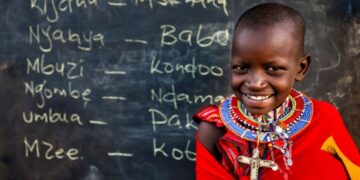

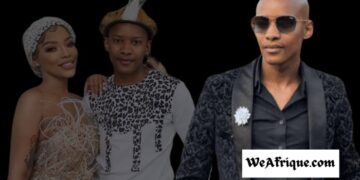







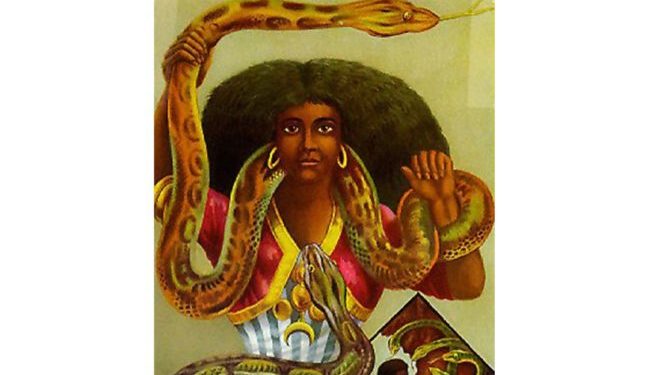










Discussion about this post